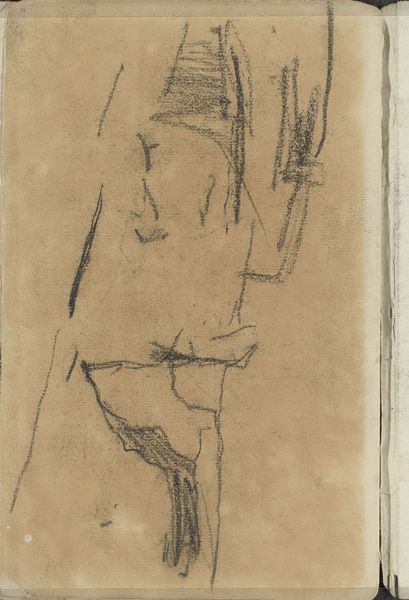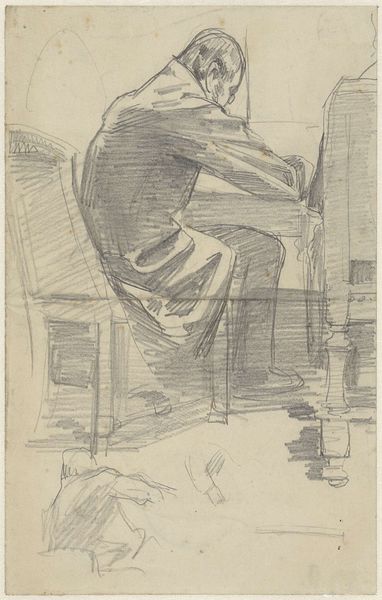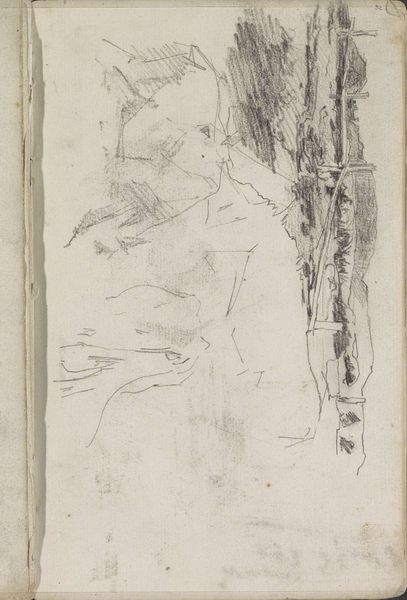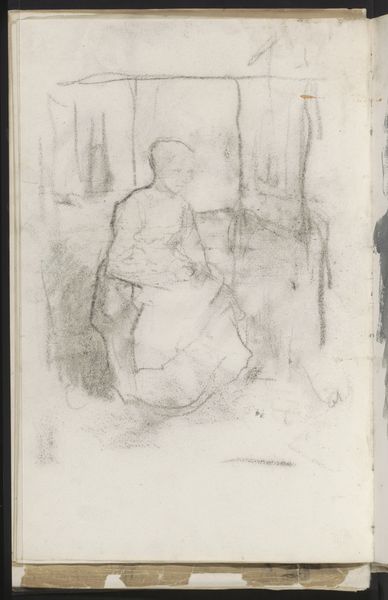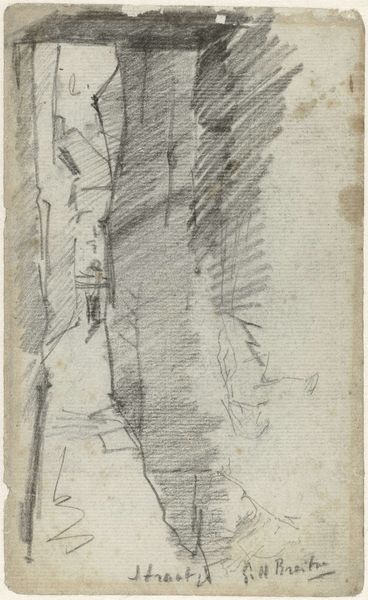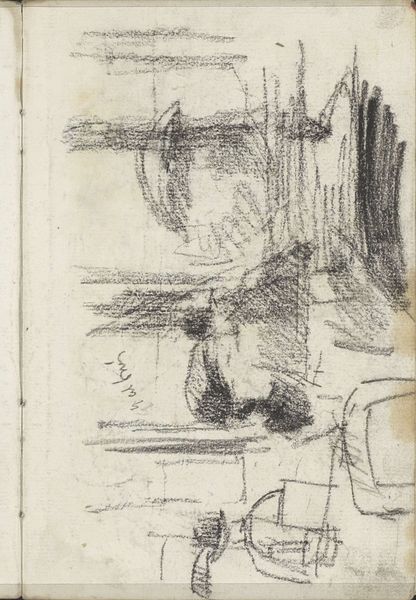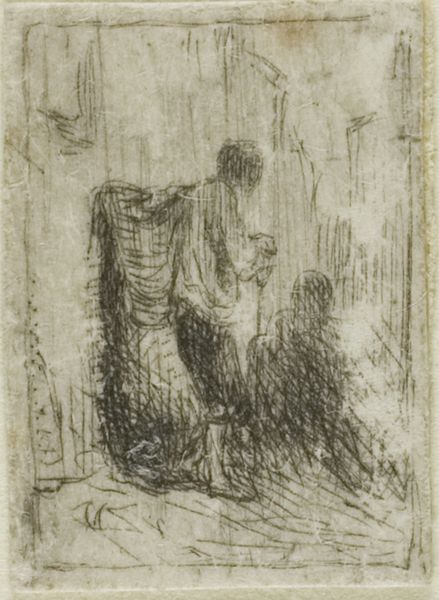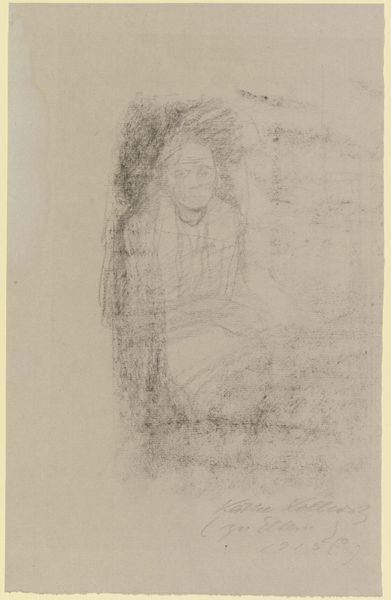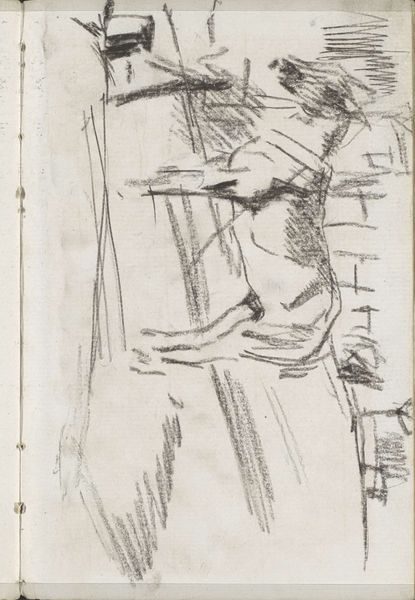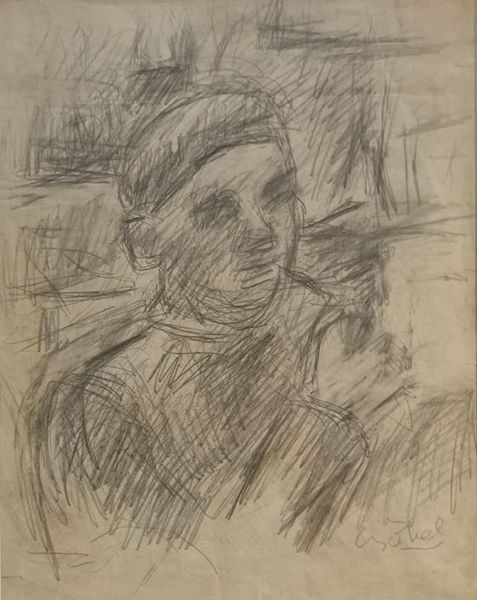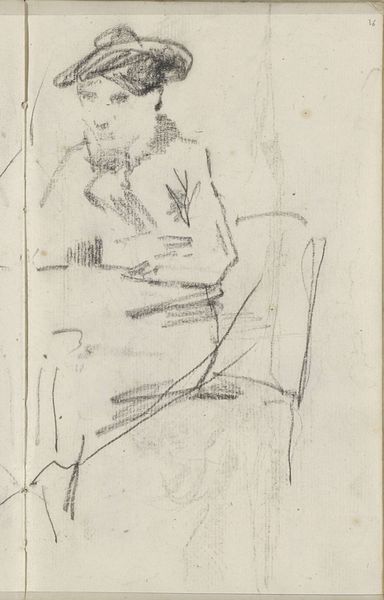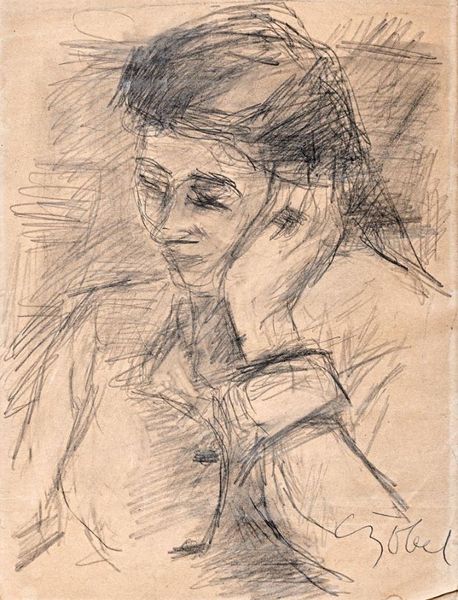
Dimensions: height 382 mm, width 262 mm
Copyright: Rijks Museum: Open Domain
Curator: Hello, and welcome. We are standing before "Twee spelende jongens," which translates to "Two Playing Boys," a pencil drawing by George Hendrik Breitner, dating sometime between 1867 and 1923. It’s part of the Rijksmuseum's collection. Editor: There’s a certain quiet sadness to it, isn't there? The smudged charcoal, the tentative lines… it's less a celebration of boyhood, more like a melancholic study of it. Curator: I think you're onto something. Look at the composition; the figures are compressed, almost engulfed by the dense shading. This feels quite typical for Breitner—there's this capturing of everyday, working class, mundane life with little varnish and raw simplicity. Editor: The way the light glances off the boy seated on the ground and look at his face: there’s an undeniable vulnerability. The hatching almost obscures, making him recede. While the medium— graphite—is typically associated with preparatory sketches, here it takes centre stage as the final form. Curator: Indeed. And see how Breitner renders the background—or lack thereof. It's gestural, almost abstract, conveying the atmosphere without defining the space. Do you think this contributes to this feeling of isolation that the boys seem to project? Editor: Absolutely. The negative space, rendered with those frenetic strokes, acts as a kind of oppressive force. In a way it reflects something of social realism combined with impressionistic techniques that are characteristic of Breitner's broader portfolio. You find yourself wondering, what are they playing at? And what kind of environment fostered such seriousness. Curator: I agree that Breitner uses a rather stripped back form of Realism to capture genuine emotion that in turns produces complex insights into everyday life of normal, perhaps even overlooked citizens. Editor: It speaks to Breitner’s sensitivity to the emotional landscape of ordinary life. After all, we feel we have entered into this emotional terrain also. It shows the potential for a simple sketch to elicit such contemplation and curiosity. Curator: I suppose Breitner proves that, in the right hands, humble materials and the intimate study of our ordinary, real encounters is able to open up great avenues for exploring themes about what it means to be human. Editor: Precisely. And that is why we still continue to reflect on these drawings after all these years.
Comments
No comments
Be the first to comment and join the conversation on the ultimate creative platform.

